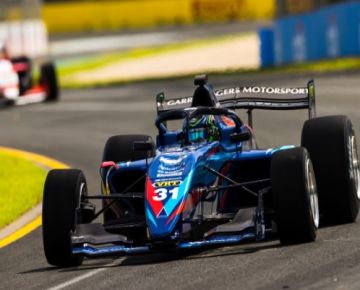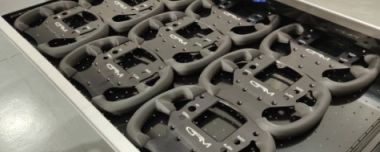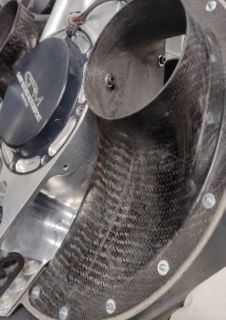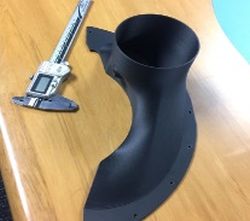Race Team Turns to 3D Printing in Effort to Finish #1
Garry Rogers Motorsport is Australia's oldest motorsport team, securing wins in 3 different racing series. The company has a team of nearly 40, with a focus on designing, building, and maintaining its own race cars. But their designs were limited -- until they teamed up with the additive manufacturing experts at Markforged Technology.
While Garry Rogers Motorsport could do some manual machining and composites fabrication at their in-house workshop, they didn't have CNC machining capability. The team had always turned to third parties each time they needed several low-volume complex parts.

To date, Garry Rogers has manufactured over 300 parts for their race cars (and driver!) -- iterations of designs that have shaved valuable time off their races.
However, the turnaround time was not fast enough and was cost prohibitive. The more time spent outsourcing parts, the slower the R&D process -- meaning the team had less time to focus on finding ways to improve their cars' performance -- both on the racetrack and in the pit during pit stops.
Engineers and designers at Garry Rogers Motorsport use Computational Fluid Dynamics (CFD) software to test the airflow of their parts. The software often recommends changes in a part's design to increase speed and improve overall performance, which can result in extremely complex parts -- something the team wasn't able to create with its existing capabilities.

Garry Rogers Motorport used to prototype steering wheels with injection molded rubber handles and are now able to 3D print the handles for end use.
This challenge, coupled with the high costs and long lead times of adding extra details to a part's design, resulted in engineers and designers shying away from making iterations on parts that required complex designs.
The Solution
Stefan Millard, Team Manager at Garry Rogers Motorsport, made the decision to add a 3D printer to the workshop to give engineers and designers a new and complementary way to make prototypes and production parts. "3D printing gives us another option to make parts that would usually be cost-prohibitive," said Millard.
Through his research, he heard of a new machine capable of 3D printing parts containing carbon fiber -- a material familiar to the team. "It seemed like Markforged was the only company focused on making strong end-use parts rather than just prototypes," he recalled.

The final brake duct, which was made using a 3D printed brake duct pattern
The team needed carbon fiber to produce strong parts that could be used on their racecars -- and they needed to withstand high use. Millard pre-ordered a carbon fiber 3D printer from Markforged a few months later, making Garry Rogers Motorsport one of the first companies in Australia to invest in Markforged technology.
Today the team mainly uses their 3D printer to print complex parts -- from jigs and fixtures to racecar end-use parts. According to Millard, around half or more of the parts produced are for end use based on the CFD software-s suggestions. Some of the end-use parts include covers for door locks, gearbox housings, steering wheel handles, and camera mounts for the drivers.
"You name it, we've generally tried to print it," said Millard. However, the team has found the most success in printing patterns for fiberglass moldings. A recent example of this was a brake duct pattern -- a part used to create a mold for the final brake duct -- which used to cost $670 USD and took two weeks to manufacture. The team printed the same part in-house for $50 USD and reduced its turnaround time to 24 hours.

The 3D printed brake duct pattern, printed on the team's Markforged printer
The brake duct pattern also contains details in its design which can't be easily produced using subtractive methods -- and unlike a CNC, a 3D printer doesn't quote additional costs or time due to details in a design.
"The ability to print strong, end-use parts is the biggest selling point for me. It's a really reliable printer," added Millard.
Looking Ahead
Design flexibility and removing turnaround time have been the two biggest benefits of the investment, according to Millard. This has in turn helped the team to increase their cars' performance. Since adding the carbon fiber 3D printer, there has been a major focus on reducing assembly time by taking parts that used to require assembly and printing it as one part.
The time saved as a result of implementing additive technology is redeployed back into R&D. "That extra time we get by using our Markforged printer goes straight into the designing or making more parts, or finding other areas to make Garry Rogers Motorsport cars go faster -- that's our primary goal," concluded Millard.
Want more information? Click below.
Rate this article
View our terms of use and privacy policy ::m::